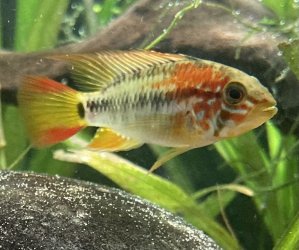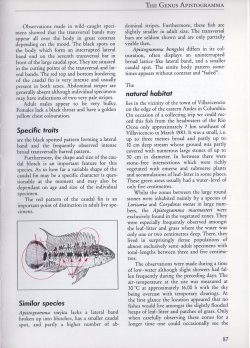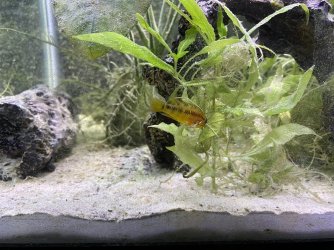Concerning the species, see if the store has an invoice from whomever supplied the fish. Often if these are wild caught from South America the species and the location watercourse may be on the invoice. That would pin down the species.
Linke and Staeck [American Cichlids I, Dwarf Cichlids, Tetra Press, 1994) write that three distinct colour morphs of Apistogramma viejita occur in the wild, and one of them is found in the same habitat as A. macmasteri, and this species is also closely allied to A. hongsloi. This may help you.
Linke and Staeck [American Cichlids I, Dwarf Cichlids, Tetra Press, 1994) write that three distinct colour morphs of Apistogramma viejita occur in the wild, and one of them is found in the same habitat as A. macmasteri, and this species is also closely allied to A. hongsloi. This may help you.

























